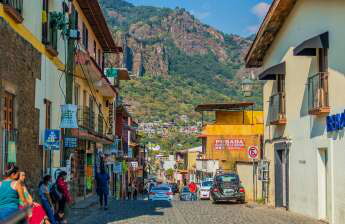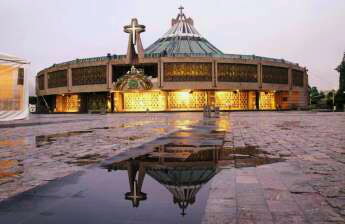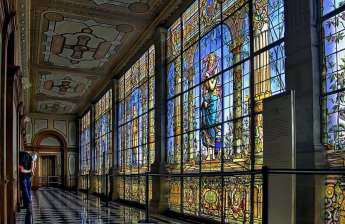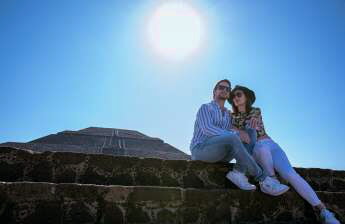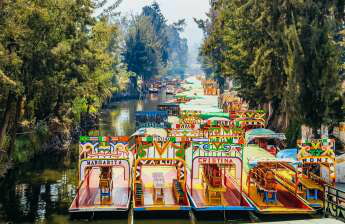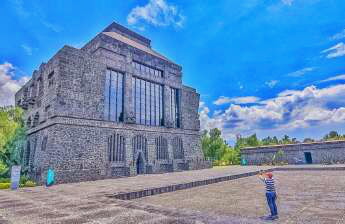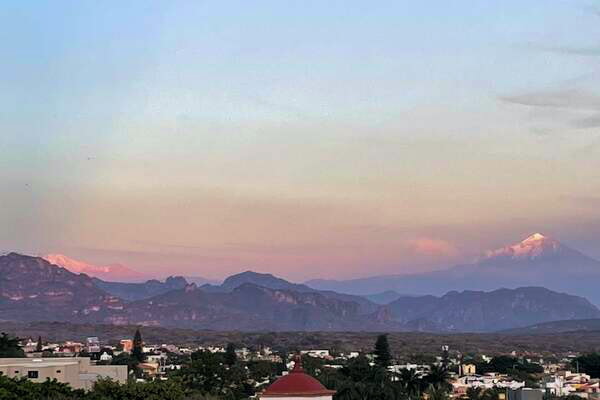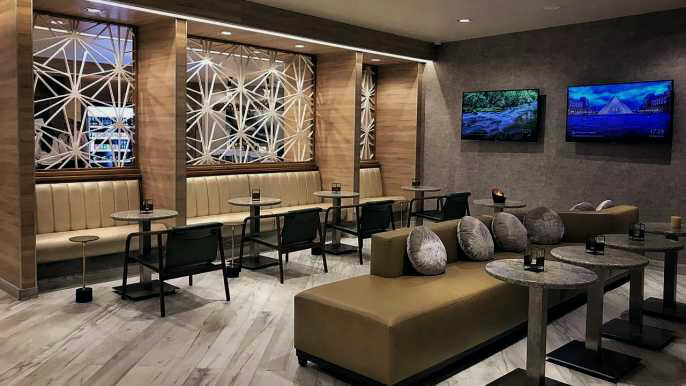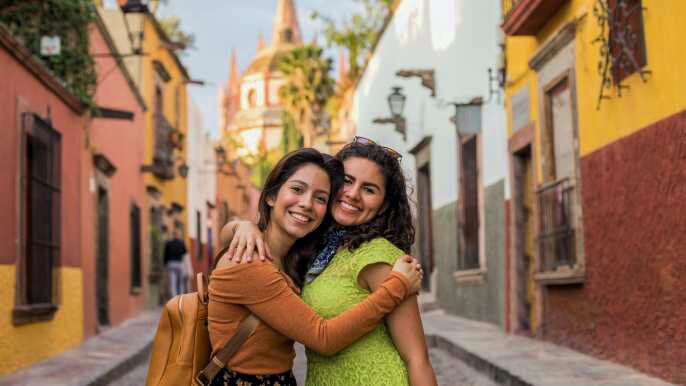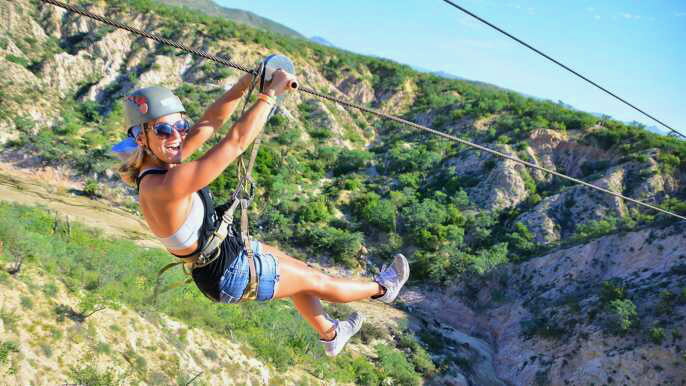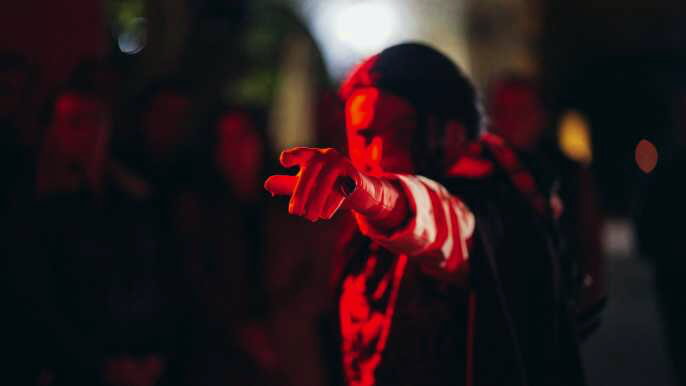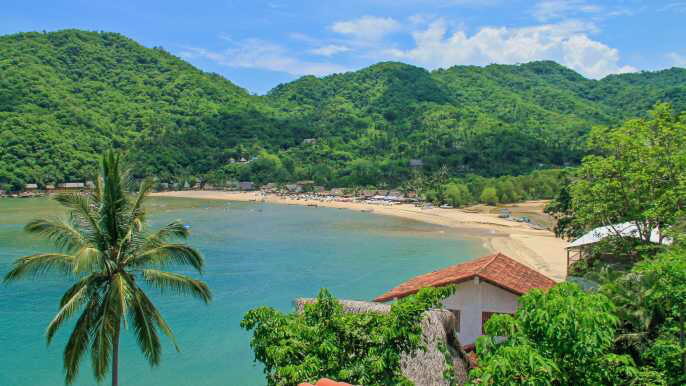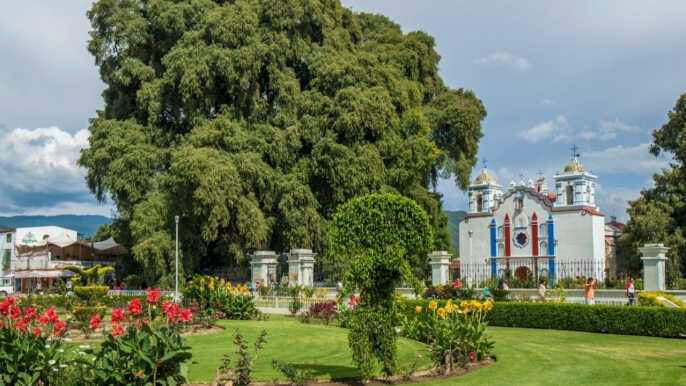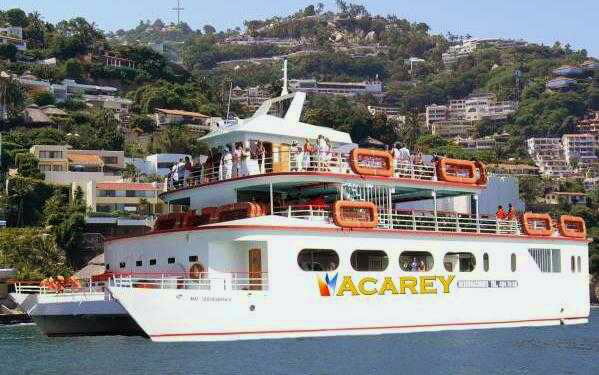Located in Mexico, this high-altitude capital is known for its historic murals by Diego Rivera, the 13th-century Aztec temple, and the baroque Catedral Metropolitana de México. The city is also home to a number of cultural activities and events, such as the Ballet Folklorico de Mexico, the Sonora Witch Market, and the Floating Gardens of Xochimilco.
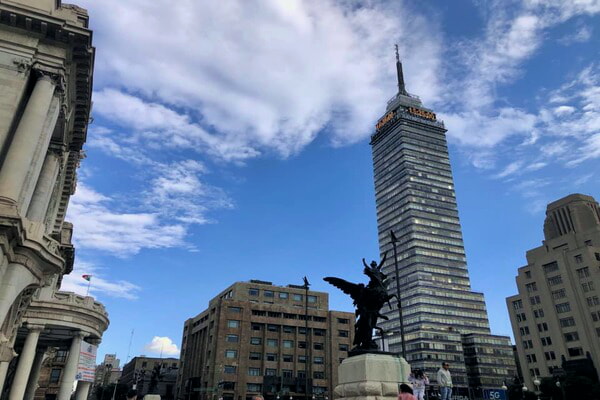
Floating Gardens of Xochimilco
Floating Gardens of Xochimilco in Mexico City are an ecologically-oriented area of the city. Previously, the area was a major agricultural center. Agriculturalists constructed rafts out of reeds and filled them with flowers and produce. They would anchor the rafts on the lake bed and mud from the lake's bottom was used for growing plants.
These rafts were also referred to as chinampas. They are remnants of the Aztec Empire's 14th-century land reclamation project. After the conquest of Mexico in 1521, the reeds were abandoned and the rafts became human-made islands.
Today, Xochimilco is a popular tourist destination for visitors from all over the world. There are several tour options available, including tours that include chinampas. They cost around $30 per person for a group of up to twelve people.
Another option is to take a traditional boat ride through the canals. These brightly colored gondolas are known as trajineras in Mexico. These boats are outfitted with chairs and tables, and offer a scenic view of the gardens.
Another way to get to Xochimilco is by taking a bus from the center of the city. A reloadable CDMX card can be purchased outside the turnstiles and costs MX$3 for one-way travel.
Xochimilco is also home to a number of museums, such as the Dolores Olmedo museum, which features works by Frida Kaho. The museum has an extensive collection of Mesoamerican Olmec and Olmec culture.
Xochimilco is a day trip from Mexico City. It is an hour south of the city's historical center. The Xochimilco Floating Gardens are considered a UNESCO World Heritage Site. The Xochimilco canals are now clean and kept clear year-round.
Sonora Witch Market
Mercado de Sonora is one of the most popular markets in Mexico City. It offers magical items, shamanistic rituals, and white magic potions. The market is also a tourist destination and draws visitors from all over the world.
The market is home to 400 witches and shamans. They specialize in various vernacular religions, including Voodoo and la Santa Muerte. There are many different items available, including herbs, wands, potions, and candles.
The market is one of the largest esoteric markets in the world. It combines pre-Hispanic magical elements with modern rituals. It is a great place to learn about Mexican witchcraft.
There are a variety of items on offer at the market, from crucifixes to crystals to rattlesnake skin tea. There are even live animals for sale.
The market is open daily. It is located in the Venustiano Carranza borough. It is a 64-year-old market. The market celebrates its anniversary on September 23. During the celebration, the merchants provide special discounts and gifts.
The main aisle of the market contains craftwork and traditional toys. The secondary nave contains religious pictures. Medicinal plants and esoteric products can be found in the secondary nave. There are also a number of statues for worship of Malverde and Santa Muerte. There are workshops on ancient procedures.
Aside from selling a wide variety of items, the market is also a place for year-end cleansing. Local curanderos sell cure ingredients and rituals. The market is also a good place to buy amulets, talismans, and healings.
The market is also a great place to find exotic species. Many illegally poached animals can be found here. It is also a good place to purchase food, clothes, and party supplies.
Ballet Folklorico de Mexico
Founded by Mexican dancer Amalia Hernandez in 1952, Ballet Folklorico de Mexico is one of the most popular dance companies in the world. Since its inception, the company has traveled to over sixty countries and performed over five thousand times. The Ballet Folklorico de Mexico is permanently housed in the Palacio de Bellas Artes in Mexico City.
The company has received over three hundred awards. Its repertoire includes forty ballets. Its earliest ballets take the audience on a journey through pre-Columbian civilizations.
Ballet Folklorico de Mexico is known for its elaborate costuming and highly choreographed traditional dances. The dancers wear colorful skirts and embroidered jackets. There are also several different styles of folklorico. Some of the dances depict local animals and lifestyles.
Amalia Hernandez's goal was to preserve the dancing traditions of her country. She aimed to create a professional company that would make the beauty of Mexican dance available to the world. She believed in a shared historical narrative that would inspire audiences.
Ballet Folklorico de Mexico has toured extensively throughout the United States and Mexico. The company is now considered a cultural icon of Mexico.
The first Ballet Folklorico de Mexico was modeled after the Ballets Russes. It had more than fifty performers during the Pan American Games of 1959. Today, the company is composed of two artistic companies: the First Company and the Resident Company.
Ballet Folklorico de Mexico has performed in more than 300 cities in Mexico. The company has a permanent home at the Palace of Fine Arts in Mexico City. The company has toured internationally and has performed more than a hundred times in the United States.
Coyoacan
Known as the "foreigner's paradise," Coyoacan in Mexico City is a vibrant and colorful neighbourhood filled with museums, cafes, and restaurants. The city also has several cultural centres and is home to Frida Kahlo's former home.
The largest university in Latin America, UNAM, is located in Coyoacan. There are over 100 libraries on campus, and the university is covered in murals showcasing Mexican culture. The university is considered a UNESCO World Heritage site.
Coyoacan has a very bohemian vibe, and an active student population contributes to this atmosphere. Visitors can find some of the oldest Spanish buildings in Mexico here.
There are two large plazas in Coyoacan, Plaza Hidalgo and Plaza del Centenaro. Both are lively areas with many street food stands. A market is held in the central square on weekends, focusing on jewelry, clothing, tattoos, and piercings.
There are a handful of museums in the area, including the Museo Nacional de Culturas Populares. The museum is open Tuesday to Thursday and offers a free tour. The museum's counter also has a good supply of information in English.
The Coyoacan Market is one of the most famous attractions in the area. The market is located in a historic plaza, and is a place to buy traditional Mexican toys, clothing, and snack foods. It is a great place to watch people.
The Pyramid Terrace is a great way to enjoy the view of CDMX. The Coyoacan borough was carved out of the Federal District in 1928, and preserved much of the original colonial center.
The best way to get around Coyoacan is by taking an Uber. You can get there for about $5 US outside of peak rush hour.
Polanco
Located in the northwest corner of Mexico City, Polanco is a high-end, elegant neighborhood. It's home to luxury hotels, restaurants, and some of the best shopping in the city. It's also a place where people from all walks of life can gather to explore the rich culture and cuisine of Mexico.
The main street in the area is Avenida Presidente Masaryk. It has a few shops that are exclusive to the area. You'll find brands such as Gucci, Salvatore Ferragamo, Cartier, and Uterque. There are also some local designers and boutiques.
Polanco has an upscale restaurant district, which is known for its Michelin star dining experiences. You can find some of the world's best restaurants here, including Pujol. The restaurant features a modern Mexican menu that uses indigenous ingredients.
Polanco is also known for its street markets. These shops sell all kinds of Mexican snacks and fresh produce. There are also some good places to shop for art. There are several galleries in the area, including Galeria Lopez Quiroga, which focuses on sculptures.
There are several parks in the area, including the Bosque de Chapultepec. It's a great place to visit if you're a first-time visitor. It's a good idea to plan a day to fully appreciate the beauty of this park.
The Polanco area is one of the fastest developing areas of the country. It's undergoing a major transformation, with new development projects being built and a 1,500-seat theater being built on the area's land.
Originally, the area was developed to mimic the downtown districts of European cities. However, the area suffered in the 1970s and 1980s as people moved out to the suburbs. In the 1990s, people began to return and the area re-emerged as a thriving, posh neighborhood.


